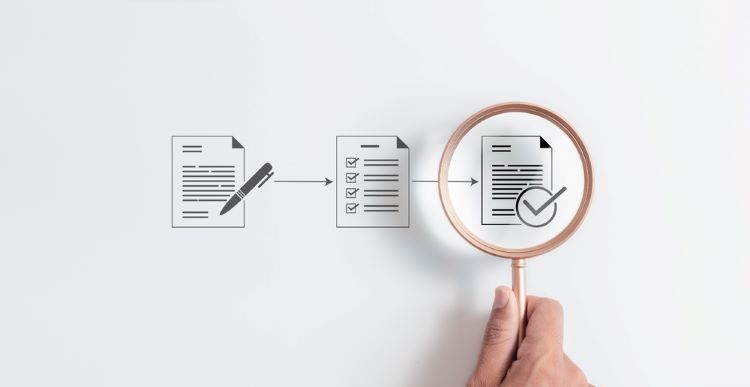ICH Q14 – latest guideline on analytical procedure development
Posted: 22 May 2024 | Dave Elder (David P Elder Consultancy) | No comments yet
Here, Dave Elder delves into the newly issued ICH Q14 guidance on analytical procedure development, discussing its impact during commercial phases as well as clinical development.


Last issue, we looked at the revisions to the ICH Q2(R2) – Validation of analytical procedures1,2 guidance. Now, we will look at the newly issued guidance on analytical procedure development (ICH Q14).3 The goal of this guidance is to produce ‘fit for purpose’ analytical methodology with the requisite specificity, accuracy and precision over the method’s intended range. This is principally aimed at the ongoing development and lifecycle management of established methods of commercial products and is aligned with ICH Q12.4 It is envisaged that in certain cases, the existing method could be applied to multiple, similar products with “little or no modification of the measurement conditions”. For any new application of this type of method, the necessary development can be truncated and supporting validation reduced based on risk-based and science‑based justifications.
The principles of the ICH Q14 guideline can also be applied to other analytical techniques as part of the control strategy. There are detailed case studies of the method development for the measurement of six process-related stereoisomeric impurities using chiral liquid chromatography. A related example covers the desire of an applicant to change an established chiral method for stereoisomers to supercritical fluid chromatography (SFC). This is because SFC is now a far more established analytical technique, it can be used routinely in a commercial laboratory, and it is more environmentally friendly.5
Appropriate validation of the SFC method’s performance together with a comparability assessment… and the effect of this change on the specification is required”
Appropriate validation of the SFC method’s performance together with a comparability assessment (established chiral chromatography vs. SFC method) and the effect of this change on the specification is required. ICH Q14 also provides case studies for the use of cell-based bioassays for monoclonal antibodies and highlights the validation requirements. Finally, ICH Q14 covers the requirements for several multi-factorial model-based methods, eg, near-infrared spectroscopy (NIR), highlighting the requirements for model calibration, method validation and ongoing performance monitoring.
The guidance differentiates between traditional method development and enhanced approaches to analytical method development. The minimum requirements are highlighted, including:
(i) identifying those attributes that require testing
(ii) identifying a suitable technology
(iii) identifying the analytical procedure performance characteristics, over the reportable range
(iv) fully documenting the procedure
(v) compiling an analytical target profile (ATP),6 conducting risk assessments, uni- or multi-variate experiments, or modelling to explore likely parameter interactions, and defining an analytical control strategy.
The analytical control strategy is further defined as, “a set of controls, derived from current understanding of the analytical procedure, including development data, risk assessment, robustness and prior knowledge. The analytical procedure control strategy should be defined before validation (ICH Q2) and should be confirmed after validation has been finalised”. The control strategy includes those analytical parameters requiring control and the system suitability test (SST),7 which is an integral part of the analytical procedure. The SST might define the minimal resolution between two related substances for the method to operate optimally.
ICH Q14 states that this guideline “can be applied in a phase-appropriate manner to analytical procedures used during clinical development”. However, the analytical method procedure lifecycle focuses solely on post-submission changes. Indeed, the level of process understanding for a Phase I method is not readily aligned with the requirements for change control of an established method, ie, method development should be based “on risk management, comprehensive understanding of the analytical procedure and adherence to predefined criteria for performance characteristics”.
In summary, this is long overdue guidance on the lifecycle of analytical procedures. However, an opportunity has been missed by not providing clearer guidance on the regulatory expectations of method development for analytical methodologies used in development.
Access the full Issue 2 2024 here.
About the author


References
1. ICH Q2(R2). Validation of analytical procedures. Final Version Adopted on 1 November 2023.
2. Elder DP. Validation of Analytical Procedures – ICHQ2(R2). Eur. Pharm Rev. 2024;29(1):5.
3. ICH Q14. Analytical procedure development. Final Version Adopted on 1 November 2023.
4. ICH Q12. Technical and regulatory considerations for pharmaceutical product lifecycle management – Scientific guideline. 04 March 2020. EMA/CHMP/ICH/804273/2017. Committee for Medicinal Products for Human Use.
5. Roskam G, van de Velde B. Supercritical Fluid Chromatography for Chiral Analysis, Part 1: Theoretical Background. LCGC. 2022; 35(03): 83-92.
6. Jackson P, Borman P, Campa C, et al. Using the Analytical Target Profile to Drive the Analytical Method Lifecycle. Anal Chem. 2019; 91(4):2577-2585.
7. USP <621> Chromatography – System Suitability. [Internet] 2024. [cited 2024Mar] Available from:
http://ftp.uspbpep.com/v29240/usp29nf24s0_c621s12.html
Issue
Related topics
Analytical techniques, Biologics, Chromatography, Drug Development, Drug Safety, Industry Insight, QA/QC, Spectroscopy, Therapeutics









